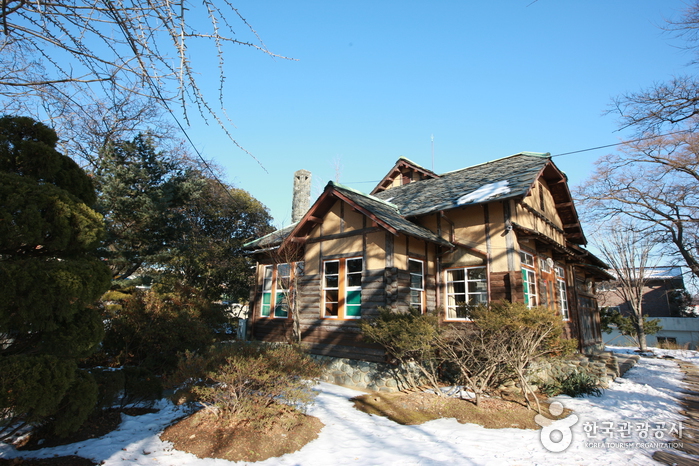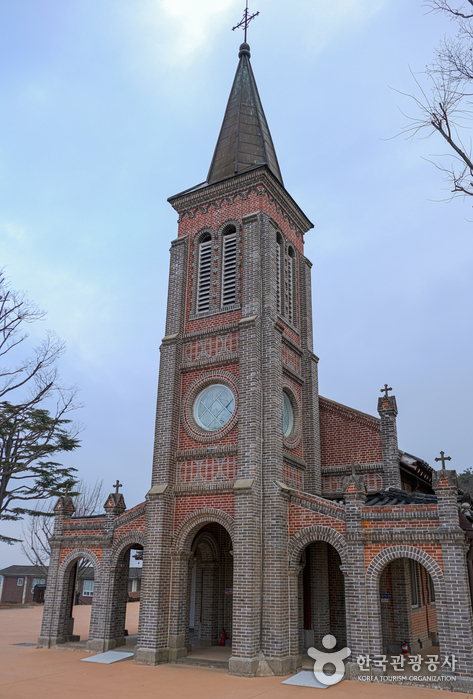Olive Young - Jeonju Seobu Center Branch [Tax Refund Shop] (올리브영 전주서부센터점)
19.5Km 2024-06-26
#102, 48, Hongsannam-ro, Wansan-gu, Jeonju-si, Jeonbuk-do
-
Homeplus - Jeonbuk Jeonju Branch [Tax Refund Shop] (홈플러스 전북전주)
19.7Km 2024-06-28
771, Baekje-daero, Deokjin-gu, Jeonju-si, Jeollabuk-do
-
House of Lee Young-choon (이영춘가옥)
19.7Km 2024-04-07
7, Donggaejeong-gil, Gunsan-si, Jeonbuk-do
+82-63-454-3922
The House of Lee Young-choon was constructed by
a Japanese landlord named Kumamoto during the Japanese colonial era. The house combined Western, Korean, and Japanese into one structure. After Korean liberation, Dr. Lee Young-choon, the first medical doctor, lived in the house. From that time, the house was referred to as the
House of Lee Young-choon.
Thanks to its beautiful exterior, the house was used as a backdrop for films such as Bingjeom, Sandglass, and Yain Shidae, etc.
The doctor was considered the Korean "Albert Schweitzer", and his
pen name of "Ho", referring to ssangcheon,
means "two branches of spring water, represents one for healing physical disease and the other for healing the
spirit. He was born in Yonggang-gun, Pyeongannam-do in October 1903. In 1935,
through a connection by his professor at Pyeongyanggobo School, he took a position
as the head of Jahye Hospital to take care of 20,000 people. In addition, he was the first person
in Korea to implement the policy of school nurses as well as the medical insurance union.
The Handsome - Jeonju Outlets Branch [Tax Refund Shop] (한섬 전주아울렛)
19.8Km 2024-04-22
141, Seowon-ro, Wansan-gu, Jeonju-si, Jeollabuk-do
-
Nabawi Catholic Church (화산천주교회(나바위 성당))
19.9Km 2024-04-07
146, Nabawi 1-gil, Iksan-si, Jeonbuk-do
+82-63-861-9210
Nabawi Catholic Church is located in Hwasan-ri, Mangseong-myeon in Iksan, Jeollabuk-do Province and is known as the oldest surviving catholic church in the Jeolla-do region. The church was built in 1906 to commemorate the return of priest Kim Dae-geon in 1845 (Joseon dynasty) after he was ordained in Shanghai, China. Inside the church stand two monuments: one built in 1954 to honor Joseph Vermorel (French missionary, 1860-1937) and one built in 1955 to honor priest and martyr Kim Dae-geon. Considered the most significant catholic relic of the Jeolla-do region, the church is sought out by large numbers of Catholic visitors each year.

![Homeplus - Jeonbuk Jeonju Branch [Tax Refund Shop] (홈플러스 전북전주)](http://tong.visitkorea.or.kr/cms/resource/56/3313356_image2_1.jpg)

![The Handsome - Jeonju Outlets Branch [Tax Refund Shop] (한섬 전주아울렛)](http://tong.visitkorea.or.kr/cms/resource/60/2886360_image2_1.jpg)

 English
English
 한국어
한국어 日本語
日本語 中文(简体)
中文(简体) Deutsch
Deutsch Français
Français Español
Español Русский
Русский